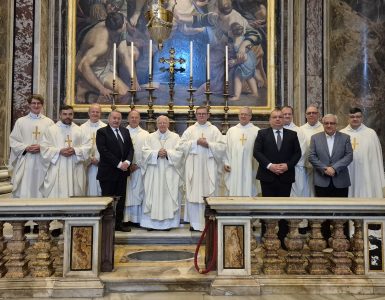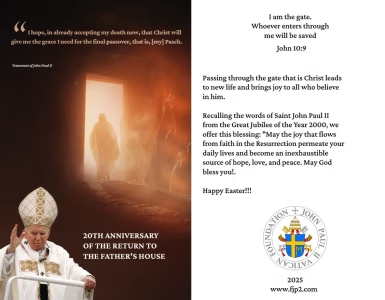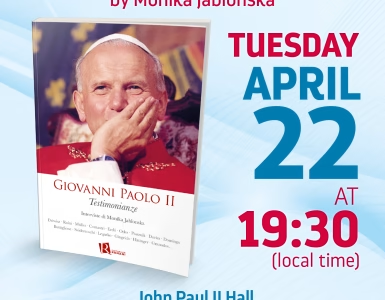It is not only about remembering, about memory. It is above all about the legacy that Blessed John Paul II left behind. A legacy not only spiritual, linked to his figure, to his witness, but also a legacy in the ecclesial dimension, beginning with the vision of the Church that he had and lived personally. In saying this, I certainly do not want to make critical remarks about the pontificate of Benedict XVI. Moreover, putting aside the distinctiveness of the situations in which they have to act, I would like to emphasize the continuity between the two Popes. It is enough to consider the common commitment to face the crisis of faith, to place God anew in the conscience of today’s man. Just by thinking of the strategy of the new evangelization common to both pontificates, directed both towards mission territories and Western countries affected by dangerous spiritual decline supports that statement. Speaking of this, however, I cannot fail to notice that the legacy of John Paul II, both in the ecclesial and pastoral spheres, probably did not fully reach many Catholic communities.
To be honest, the many gifts given to the Church of the third millennium by John Paul II as his legacy have not yet been well understood or taken on a mature form. I am thinking in particular of the prophetic cry at the beginning of his Pontificate: “Do not be afraid!” Benedict XVI also took them up and repeated them in the beatification homily of Karol Wojtyła. But how did the Catholic world accept it, how did it react? Often, instead of hope, one could sense discouragement and even resignation…
But then, thank God, Pope Francis came with his great charge of spiritual energy. He became a herald of the Christian message under the sign of joy and mercy.
With the permission of Cardinal Stanisław Dziwisz – “At the side of the Saint”
St. Stanislaw BM Publishing House, Krakow 2013





